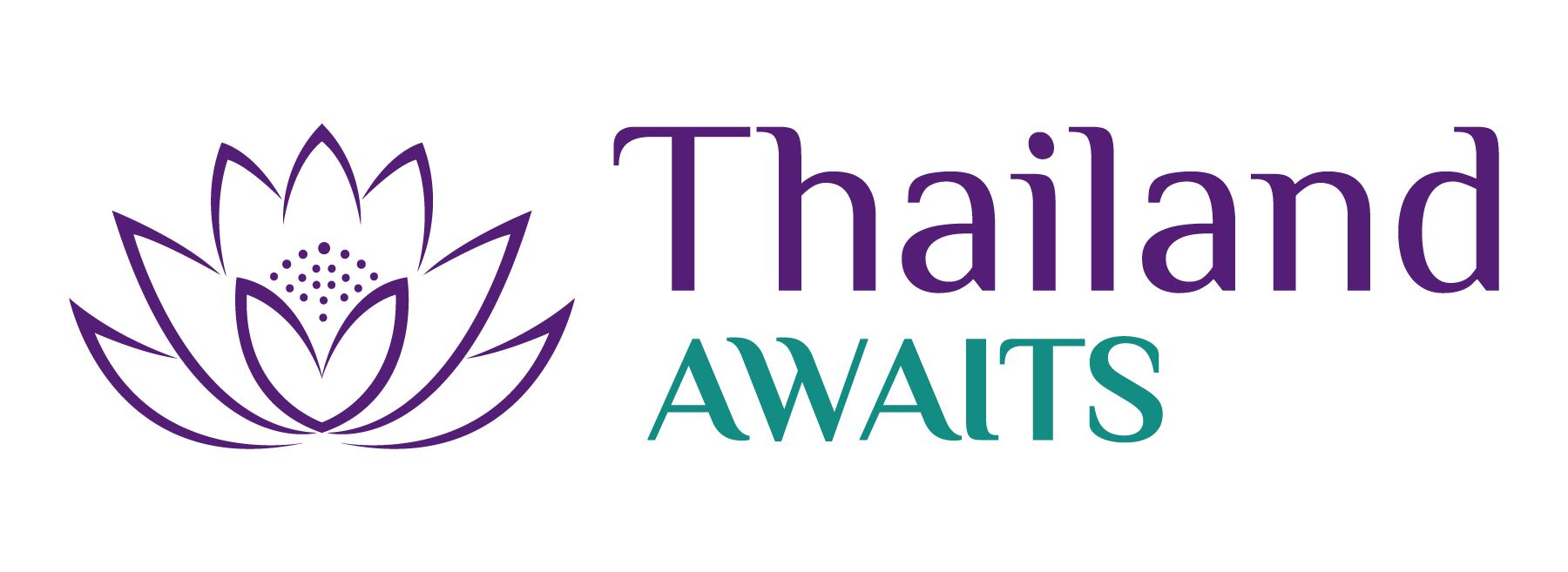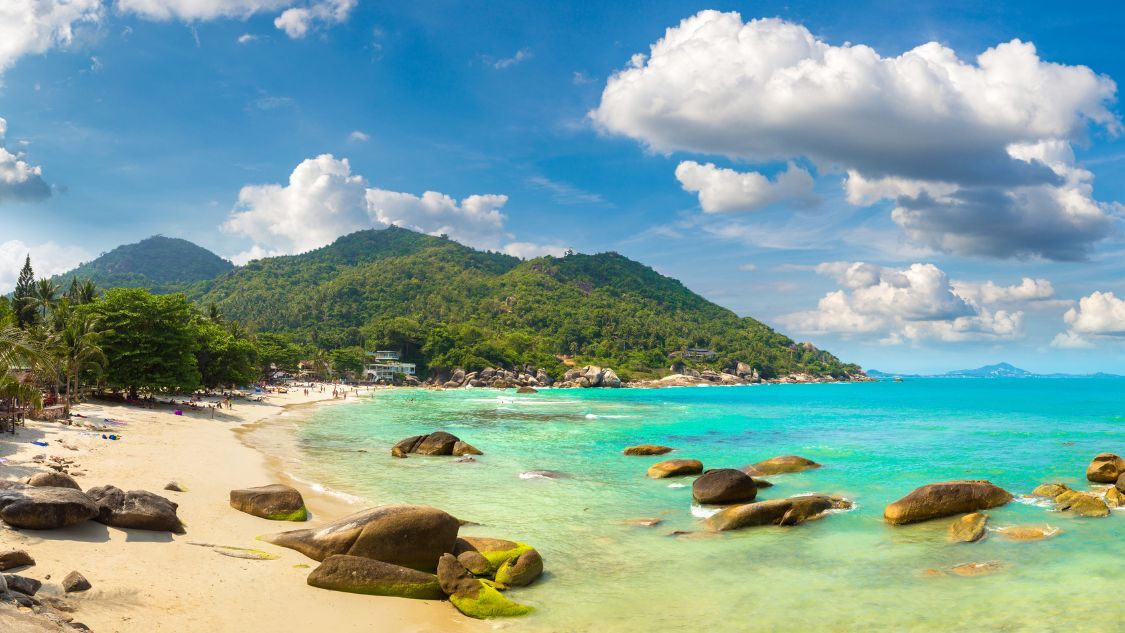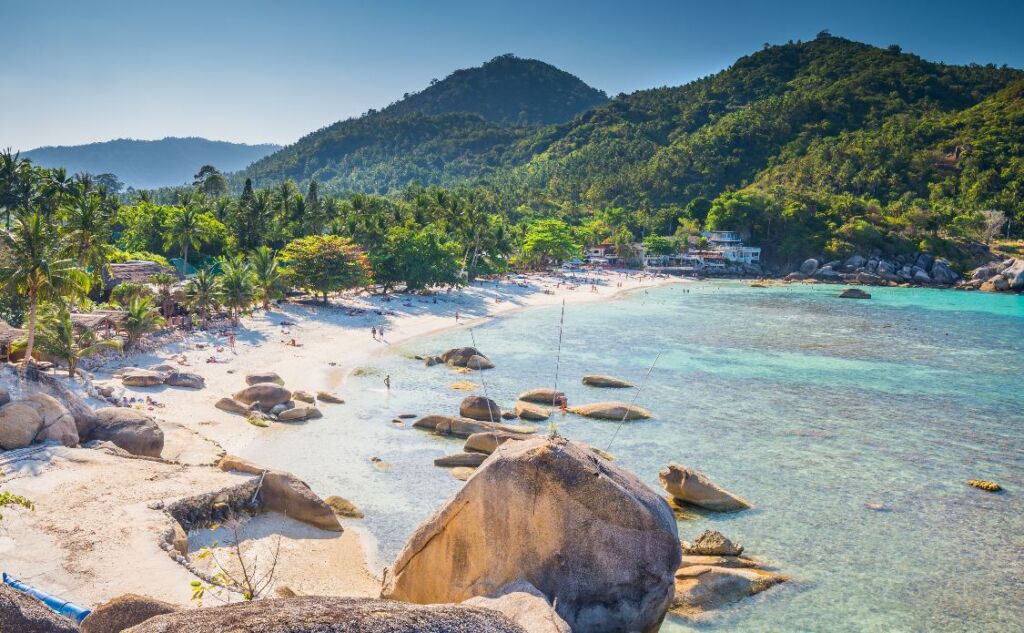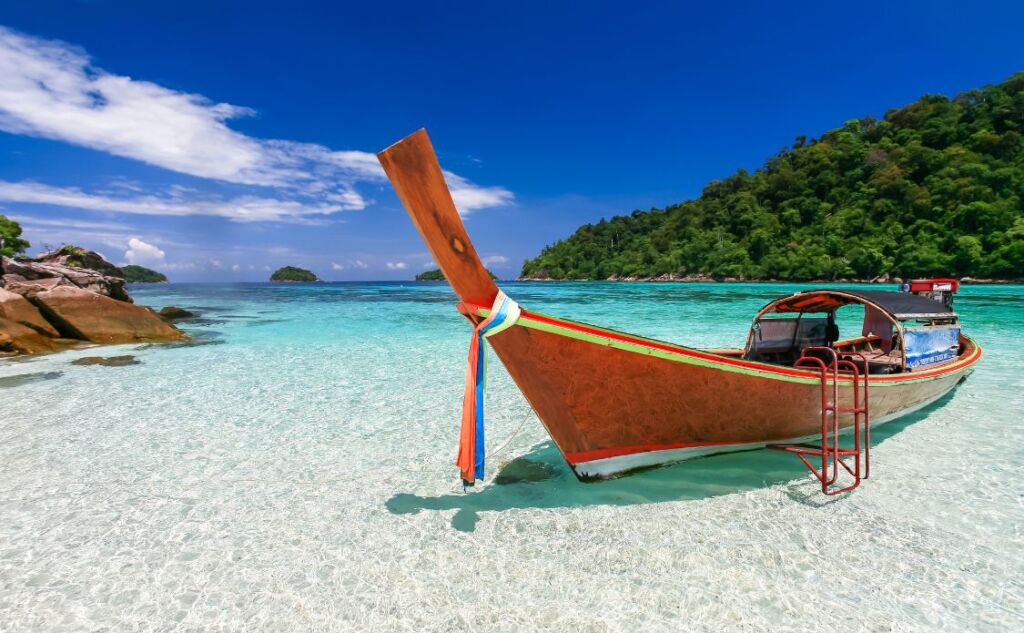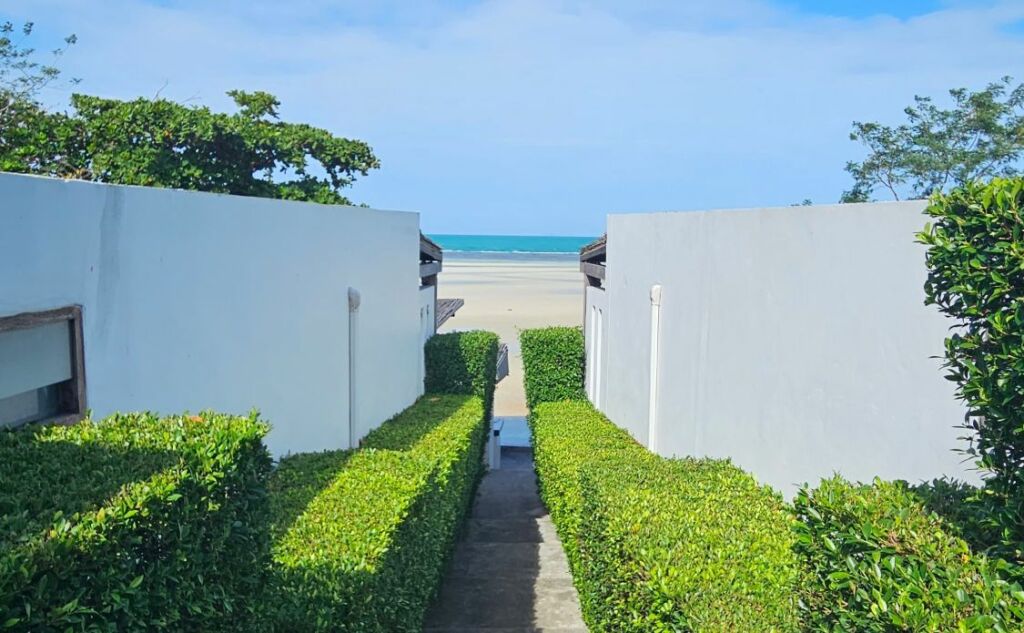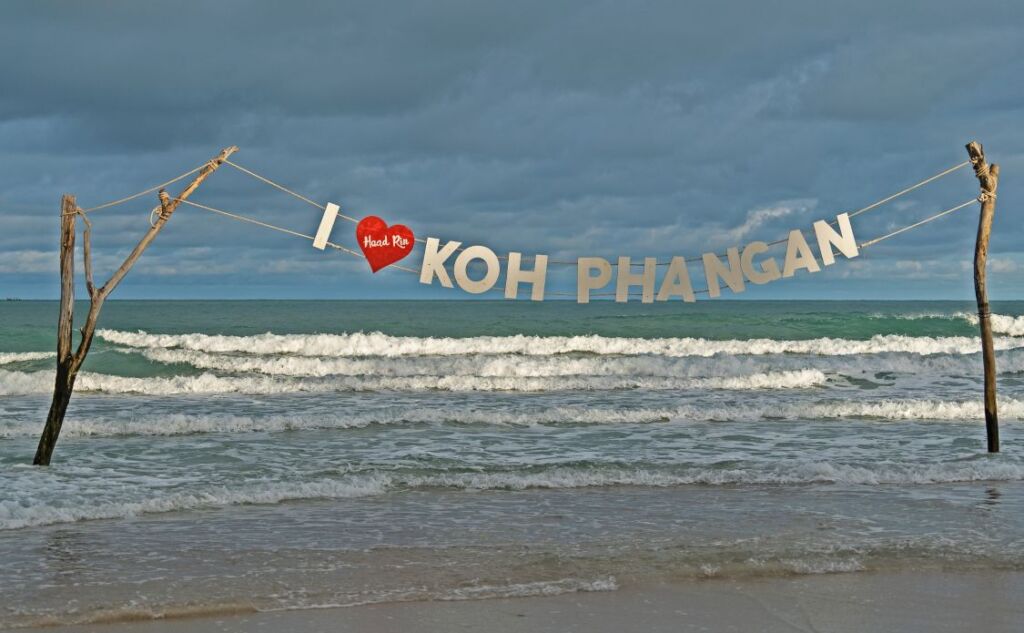Koh Samui Travel Guide
Thinking about heading to Koh Samui? This island in the Gulf of Thailand has long been a favourite for beach breaks, and with good reason. With beaches shaded by towering palms, easy day trips to nearby islands, and plenty of ways to balance relaxation with adventure, Koh Samui makes a solid addition to any Thailand itinerary.
This page contains affiliate links. Please see our disclosure policy for more details.
Why Visit Koh Samui?
Koh Samui is Thailand’s second-largest island, sitting about 700km south of Bangkok and just a short hop from the mainland town of Surat Thani. It’s home to around 50,000 residents and manages to feel laid-back while still offering more than enough to fill a week.
The beaches are the big draw, but there’s plenty beyond the sand. You’ll find over 30 Buddhist temples, a lush jungle interior dotted with waterfalls, and scenic viewpoints around the island’s 51km ring road. Koh Samui also works well as a base for day trips — hop over to Koh Phangan for a change of scene or book a boat tour to explore Ang Thong National Marine Park.
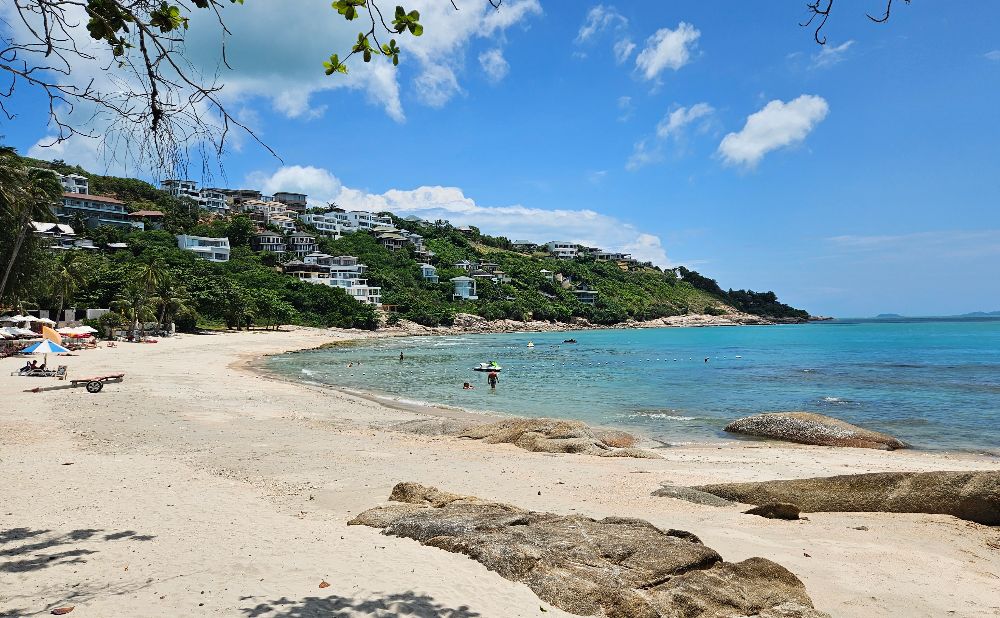
Getting to Koh Samui
Flying – Koh Samui’s airport is privately owned by Bangkok Airways, so flights are pricier than elsewhere in Thailand. There are frequent daily connections to Bangkok, Phuket and Krabi, plus some international services to Singapore, Hong Kong and Kuala Lumpur. The airport is only 2km from Chaweng Beach, and taxis cost about 400 THB. To Lamai, budget 700 THB, or to Maenam around 600 THB.
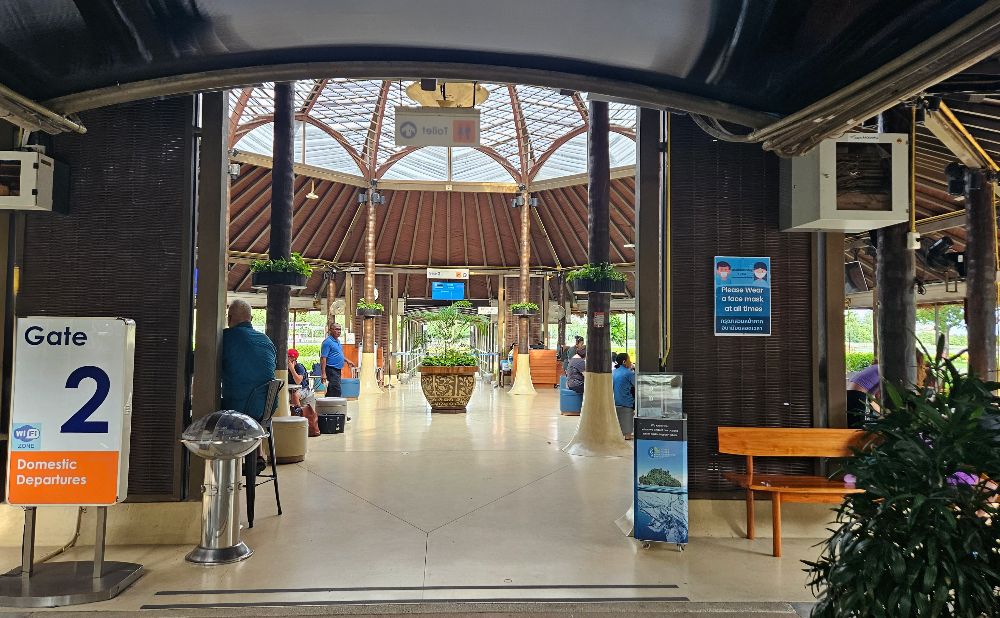
By ferry – If you’d rather save on flights, ferries run frequently from Surat Thani. Services arrive at Nathon and Lipa Noi on Samui’s western coast. Lomprayah and Seatran both offer passenger ferries, while Raja Ferry handles vehicles. Ferries leave hourly between 5am and 6pm. Alternatively you can take a ferry from Chumphon to Samui via Koh Tao and Koh Phangan.
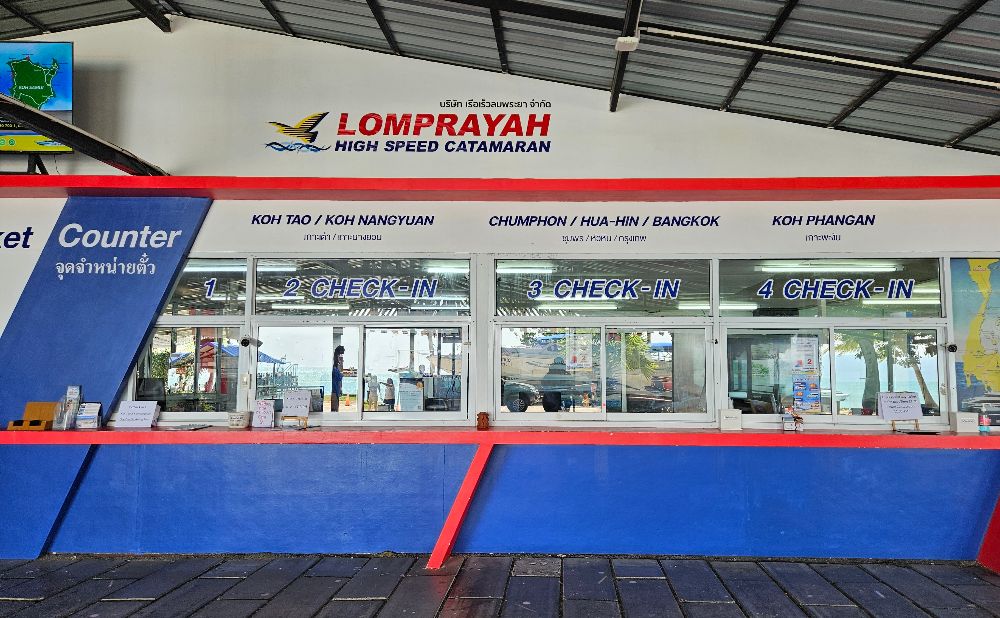
The airport is 2km from Chewang Beach and a taxi will cost approx 400 baht. If you are travelling to Lamai, expect to pay 700 or to Maenam 600 Baht. A private minivan transfer is about 25% more. Alternatively, you can book a private transfer.
Getting Around Koh Samui
Samui’s single 51km ring road makes navigation straightforward. You can rent a car or motorbike, but keep in mind that you’ll need the correct licence from home for insurance to be valid.
The road is in fairly good condition and driving is easy however motocycle accidents are common, mainly due to inexperienced riders. If you want to rent a motorcycle, you must have a motorcycle license in your own country. The police do book people who do not have one and your insurance will not cover you on a motorbike if you are not licensed.
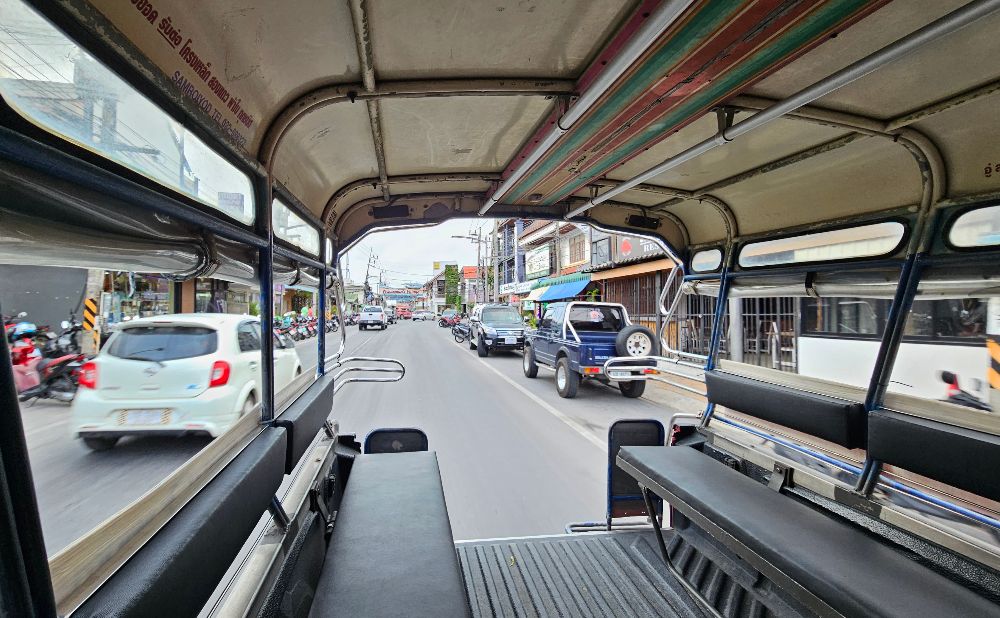
Songthaews (pronounced song-tao) are the main public transport option. These shared pick-up trucks, run set routes during the day for 40–100 THB, though at night prices are negotiable. Taxis are available but rarely use the meter.
When is the best time to visit Koh Samui
The ideal time to visit Koh Samui is during the dry season, which runs from late December to April. During these months, the weather is mostly sunny and dry, with temperatures ranging between 23°C to 32°C (73°F to 90°F).
- Late December to February: These months are cooler and relatively dry, making them a great time for outdoor activities and exploring the island.
- March to April: The weather is still dry, but it gets warmer, which is excellent for beach lovers and water activities.
It’s advisable to avoid the rainy season, which peaks in November and continues with moderate rainfall into December. During this time, there can be heavy showers and rougher seas, which can cause ferry cancellations and make water sports and day tours challenging.
Temperature and Rainfall in Samui
| Month | Avg. Temp. (°C) | Avg. Temp (°F) | Avg. Rainfall (mm) |
|---|---|---|---|
| Jan. | 23 – 29 | 73 – 84 | 90 |
| Feb. | 24 – 30 | 75 – 86 | 30 |
| March | 25 – 31 | 77 – 88 | 30 |
| April | 26 – 32 | 79 – 90 | 70 |
| May | 25 – 32 | 77 – 90 | 160 |
| June | 25 – 32 | 77 – 90 | 90 |
| July | 24 – 31 | 75 – 88 | 120 |
| August | 25 – 31 | 77 – 88 | 100 |
| Sept. | 24 – 31 | 75 – 88 | 120 |
| Oct. | 24 – 30 | 75 – 86 | 290 |
| Nov. | 24 – 30 | 75 – 86 | 430 |
| Dec. | 23 – 29 | 73 – 84 | 210 |
Things to Do in Koh Samui
There’s plenty on Samui to fill a week or more, whether you’re here to relax, explore, or mix both.
- Beach time – With over 40 beaches, you’ll find everything from lively stretches like Chaweng to quiet coves around Maenam and Choeng Mon.
- Big Buddha Temple (Wat Phra Yai) – Samui’s most famous landmark, a 12-metre golden Buddha sitting on a small island connected by a causeway.
- Wat Plai Laem – A colourful temple complex with striking statues, including a giant Guanyin with 18 arms.
- Waterfalls – Na Muang 1 and 2 are the best known, but Hin Lat is also worth a stop. Visit after rain for the best flow.
- Viewpoints – Drive into the hills for sweeping views over the island; Lad Koh Viewpoint is one of the easiest to reach.
- Fisherman’s Village Night Market – Held on Fridays, this market in Bophut combines food stalls, live music, and a great atmosphere.
- Island-hopping – Ang Thong National Marine Park is a must for kayaking, snorkelling and hiking to its famous viewpoint. Day trips to Koh Phangan or Koh Tao are also easy to arrange.
- Cooking classes & spa days – If you want to slow down, Samui has excellent cooking schools and some of the best spas in Thailand.
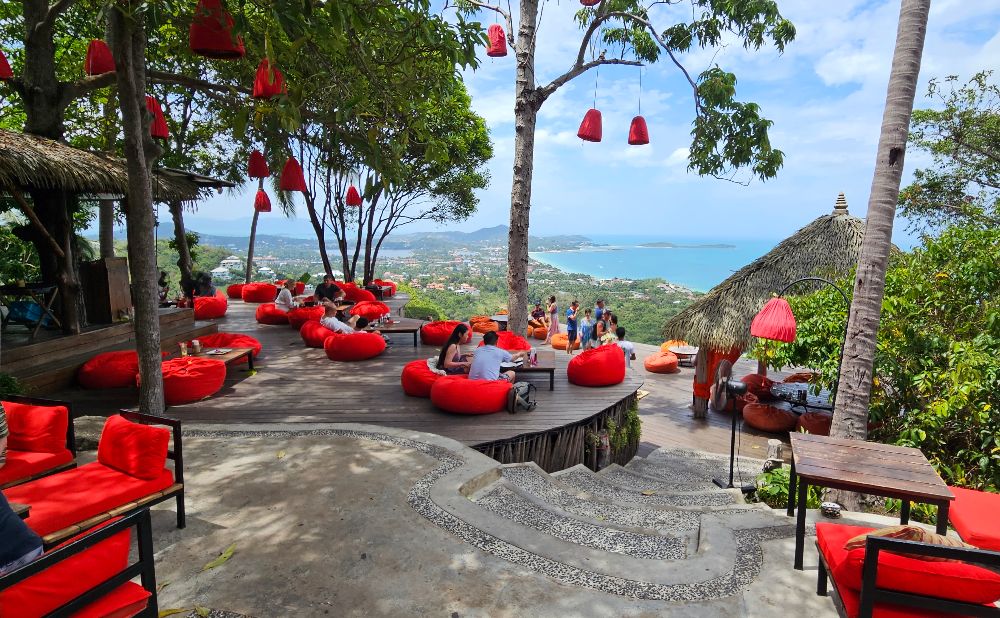
Where to Stay in Koh Samui
Koh Samui offers everything from budget beach huts to five-star villas with private pools. The key is picking the right part of the island to suit your style of travel. Here are the main areas most visitors choose, along with some hotel picks to help you start your search:
Chaweng – The busiest part of the island, Chaweng has the widest choice of restaurants, nightlife, and shopping. It’s lively and convenient, though not the quietest.
- Budget – OZO Chaweng – Modern rooms steps from the beach
- Mid-range – The Library – Striking design with red pool and beachfront location
- Luxury – Avani Chaweng Samui Hotel & Beach Club – Upmarket property perfect for party lovers
Lamai – A little more relaxed than Chaweng but still with plenty of dining and beach options. Great for those who want some nightlife without the crowds.
- Budget – Green Canyon Resort – Swiss-run tropical oasis with basic bungalows set in lush gardens, two minutes from the beach
- Mid-range – Pavilion Samui Villas & Resort – A beachfront resort with a mix of rooms and villas.
- Luxury – Rocky’s Boutique Resort – Intimate luxury resort on a private cove
Bophut & Fisherman’s Village – Trendy but low-key, this area is known for its night market, beachfront restaurants, and a slightly more sophisticated vibe.
- Budget – Dreamcatcher Beach Hotel – Modern rooms steps from Fisherman’s Village with Asian restaurant
- Mid-range – Bandara Resort & Spa – Family-friendly, walking distance to Fisherman’s Village
- Luxury – Hansar Samui Resort – Boutique option with sea views and infinity pool
Maenam – Quieter and more affordable, Maenam is popular with long-stayers and those who prefer peace and space.
- Budget – Escape Beach Resort – Simple rooms right on the sand
- Mid-range – Paradise Beach Resort – Traditional Thai style with modern amenities
- Luxury – Santiburi Koh Samui – Extensive gardens and exceptional spa facilities
Bangrak and Bang Po – a little off the beaten track and perfect if you have your own transport. Good for longer stays
- Budget – Relay Condo – Well-equipped units ideal for extended stays – we stayed a month and loved it.
- Mid-range – Humble Villas – Private pool villas at reasonable prices – our week here is so memorable
- Luxury – Six Senses Samui – Exclusive cliff-top resort with panoramic views, perfect for a honeymoon
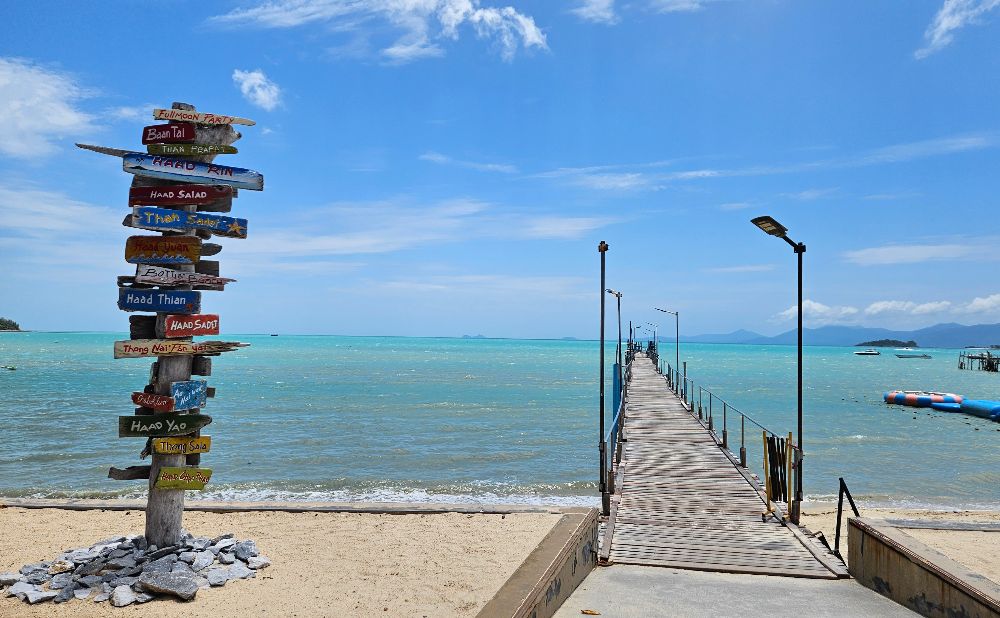
Most travellers spend five to seven days in Koh Samui, which gives you time to explore the beaches, head inland to waterfalls, and take a day trip out to Ang Thong National Marine Park.
Tours in Koh Samui
Organised tours can be a great way to see more of the island without worrying about logistics. Here are a few popular options to consider:
- Ang Thong National Marine Park Tour – A full-day trip by speedboat or ferry, usually including kayaking, snorkelling, and the hike to the park’s famous viewpoint. A must-do for most visitors.
- Island Highlights Tour – A half-day or full-day circuit of Samui’s main sights, such as Big Buddha, Wat Plai Laem, waterfalls, and scenic viewpoints. Great if you’re short on time.
- Cooking Class – Learn to cook five authentic Thai dishes in an open-air kitchen with sea views at a hands-on Koh Samui cooking class.
- Koh Phangan Day Trip – Visit Samui’s sister island for beaches, viewpoints, and waterfalls. Perfect if you want a change of scene without an overnight stay.
- 4 Wheel Drive Jungle Tour – Rev up a 4×4 for a wild jungle ride around Koh Samui—waterfalls, sacred rocks, mountain views, and lunch with a view.
What I Learnt in Koh Samui
Spending six weeks on Samui gave me a good sense of how the island works beyond the postcard images. A few things stood out:
- Neighbourhoods feel very different. Chaweng is fun if you want action, but after a few nights I found it too much. Lamai has a better balance of nightlife and beach time, while Bophut’s Fisherman’s Village felt more relaxed and polished. If you want peace, Maenam or the north coast are where I’d head back to. We loved our time at Humble Villas.
- Songthaews are your friend. Taxis are notoriously expensive, and they rarely use the meter. Once I figured out the songthaew routes and daytime fares (40–100 THB), getting around was simple and cheap. At night, though, negotiating is unavoidable.
- The interior is worth exploring. It’s easy to stick to the beaches, but some of my favourite days were spent chasing waterfalls, driving up to viewpoints, and stopping at little roadside cafés in the hills.
- Island-hopping is a highlight. A day trip to Ang Thong National Marine Park was a real standout, and Koh Phangan (yes, it’s not just about the Full Moon Party) makes a great side trip.
- Weather quirks matter. Unlike Phuket, Samui’s rainy season hits in November. I learnt quickly that planning boat trips needs flexibility — heavy seas can cancel ferries and snorkelling tours. We had boat trips cancelled in October too.
- Local food beats resort dining. My best meals weren’t in hotel restaurants but at tiny places in Bophut and Maenam serving fresh seafood and southern Thai curries.
Samui is often seen as a straightforward “beach holiday” stop, but I found it reveals more to those who take their time. Once you get beyond the main tourist strips, there’s a lot of local life, hidden viewpoints, and small details that give the island more character than it first seems.
How Long to Stay in Koh Samui
Most travellers spend five to seven days on the island, which gives you time to relax on the beaches, explore the temples and waterfalls, and fit in at least one day trip.
- 3–4 days – Enough for the highlights: Big Buddha, Wat Plai Laem, a waterfall or two, plus time on Chaweng or Lamai Beach.
- 5–7 days – Adds breathing space for a day trip to Ang Thong or Koh Phangan, plus a cooking class or spa day.
- A week or more – Ideal if you want to slow down, explore Samui’s quieter northern beaches, or spend a couple of days hopping to Koh Tao for snorkelling or diving.
Read our Koh Samui articles
Where to go next
Continue your holiday travels in Thailand. After Koh Samui, the most popular destinations are Bangkok, Phuket, and Chiang Mai.
Planning a Thai adventure? Join our friendly Facebook community Thailand Awaits: Trip Planning for Beginners. Get expert advice from locals and experienced travellers, ask your questions, and discover how to make the most of your journey through Thailand.
